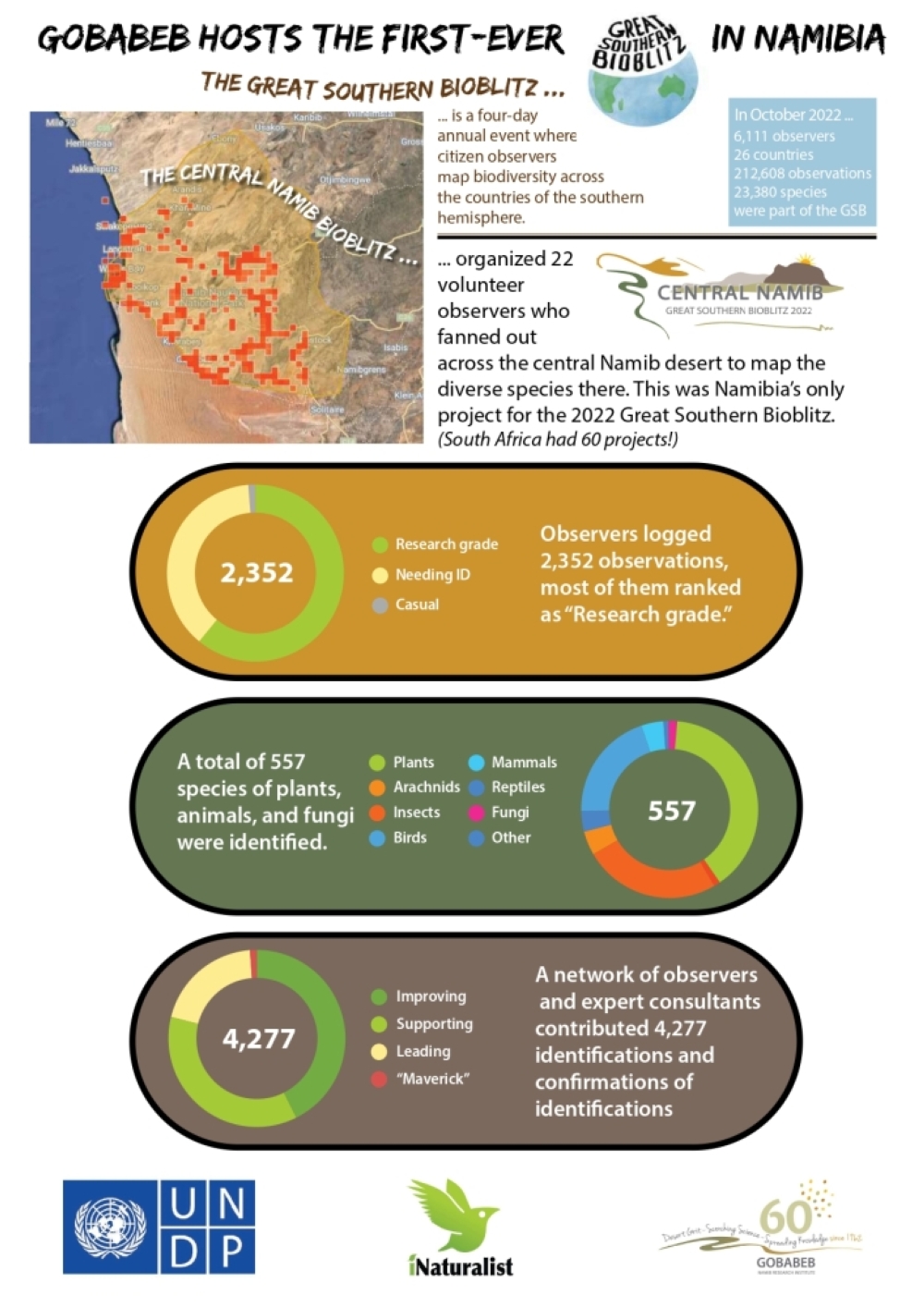‘Blitzing’ biodiversity in the central Namib
Citizen science comes to the Namib
For four days starting on 28 October 2022, biodiversity specialists and citizen scientists throughout the southern hemisphere joined forces for the “Great Southern Bioblitz”, an effort to record all the living species in a designated area in the global south. Gobabeb – Namib Research Institute spearheaded Namibia’s contribution to this multinational effort in the Central Namib Bioblitz. Several teams of observers fanned out over the Namib gravel plains from the coast to the Great Escarpment, logging more than 2 300 observations of plants, animals (except for dogs, cats and humans), and lichens. More than 200 volunteer specialists helped in identifying over 550 species. This was Namibia’s first participation in the Great Southern Bioblitz. The principal aim of the Great Southern Bioblitz is to highlight the phenomenal biodiversity found across the Southern Hemisphere. An additional purpose is to foster public engagement with nature, through the citizen science app, iNaturalist (www.inaturalist.org/). Observers take photos, upload them through the iNaturalist app, and experts throughout the world help in identifying the species. This annual event has now grown to include research institutions, universities, municipalities, communities, interest groups and individual naturalists across three continents and 26 countries in the southern hemisphere. Gobabeb proposed, developed and coordinated the Central Namib Bioblitz, a project under the Great Southern Bioblitz umbrella. In addition to the network of observers, Gobabeb brought learners from two coastal high schools (Swakopmund Secondary School and Westside High School) for weekend activities highlighting the importance of desert biodiversity, and methods for observing animals in nature. The learners took part in group rambles in the early morning, late afternoon and after dark, observing what creatures are active in the Namib, and when. The United Nations Development Programme (UNDP) generously supported the learners’ weekend at Gobabeb. In addition to the five teams of Gobabeb staffers that fanned out across the central Namib, very keen members of the public rose to the challenge with great gusto, adding to the observations and species identifications. The Ministry of Environment, Forestry and Tourism generously allowed participating enthusiasts access to the designated project area within the Namib-Naukluft National Park. Namibia made a very good showing in its first participation in the Great Southern Bioblitz. Top-spot in the GSB went to the biodiversity-rich Overstrand project in the Western Cape in South Africa. They documented 2 623 species, via 19 807 observations done by 171 persons. Gobabeb’s effort earned Namibia a 10th place out of 35 projects for southern Africa, 19th position in the overall GSB 2022.


